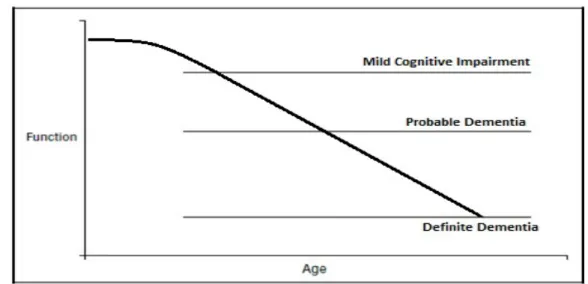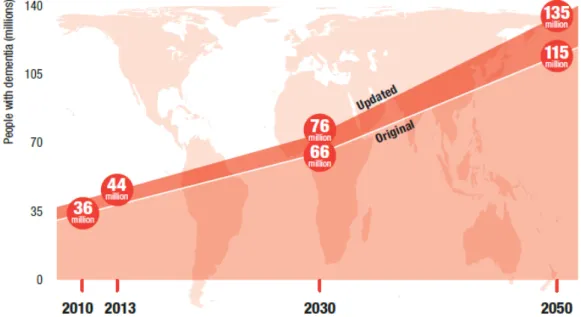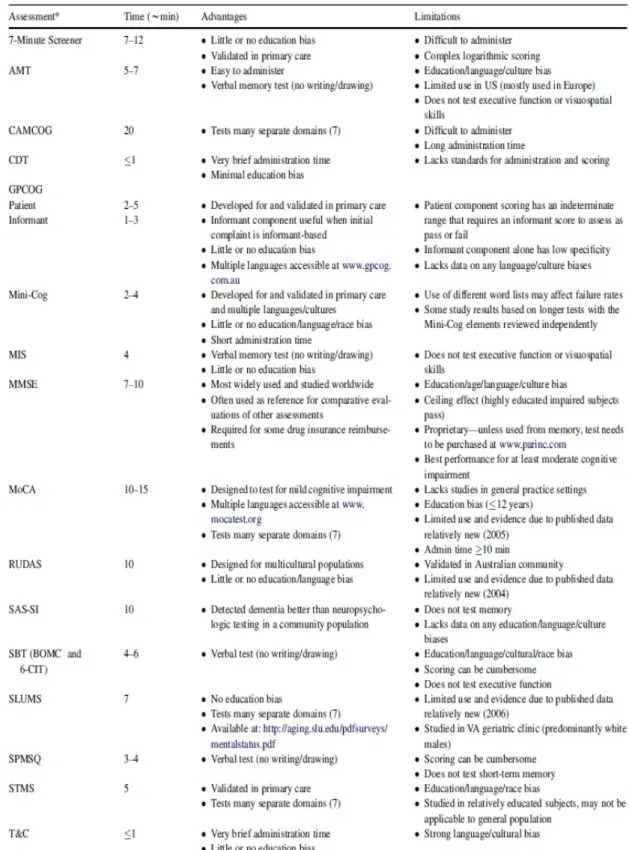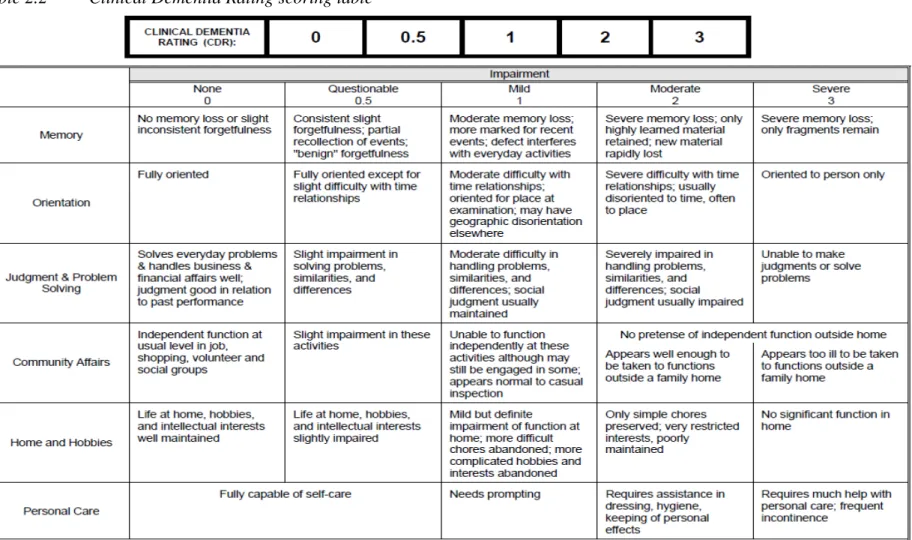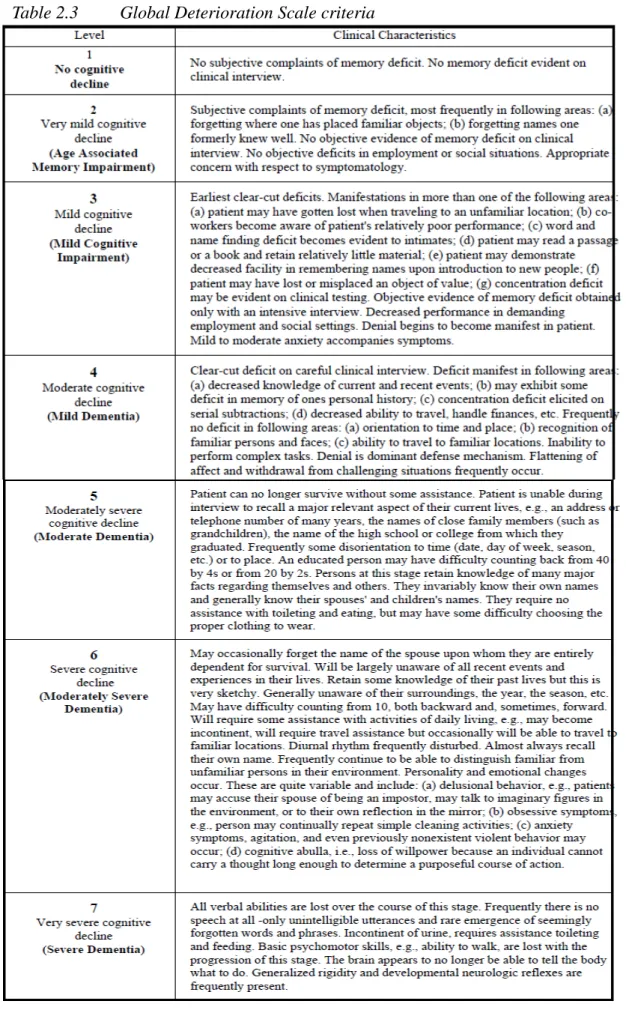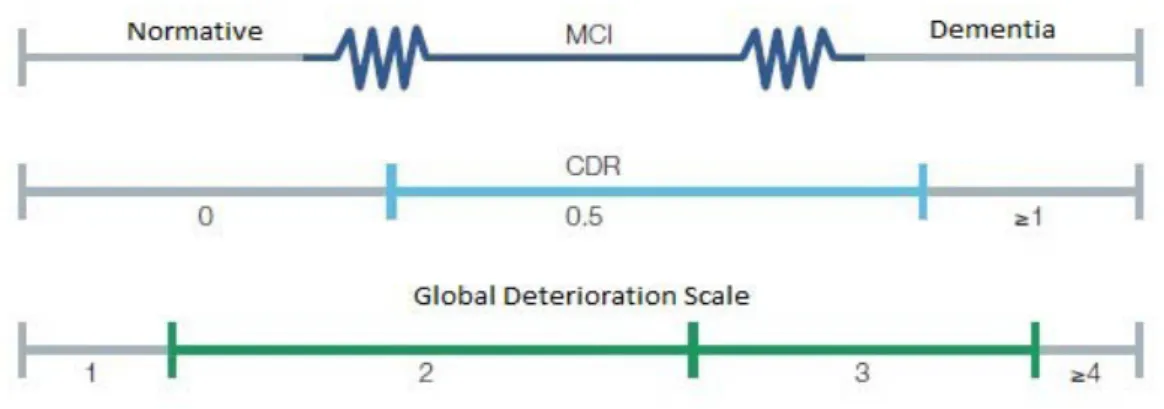我可以克服人生中的这个障碍。首先,我要向我的导师李世岱老师表示衷心的感谢,他在学术上和论文研究写作上的悉心指导,使我对营养和长期护理有了更深的认识。可以说是我一生中最富饶的阶段。感谢万雨、嘉玲等陪伴我走过这段时间、一起努力的同学,还有赵琪姐姐、小白姐姐,关键词:社区、轻度认知障碍、发病率、预防保健、护理预防。
Introduction
Evidence shows that the prevalence of dementia continues to increase along with the demographic transition, particularly among the elderly. According to the Taiwan Alzheimer's Disease Association (TADA, 台灣失智症協會), the prevalence of dementia is about 1.2% in the population between the ages of 65 and 69. However, information from the Statistics Department of the Ministry of the Interior (MOI) of Taiwan shows that there are over one hundred and eighty thousand people suffering from dementia, but only thirty-six thousand with a disability card (身心障礙手冊) (MOI , 2012), this means that a large amount of patients with dementia are still undiagnosed and undetected, especially in the community. .
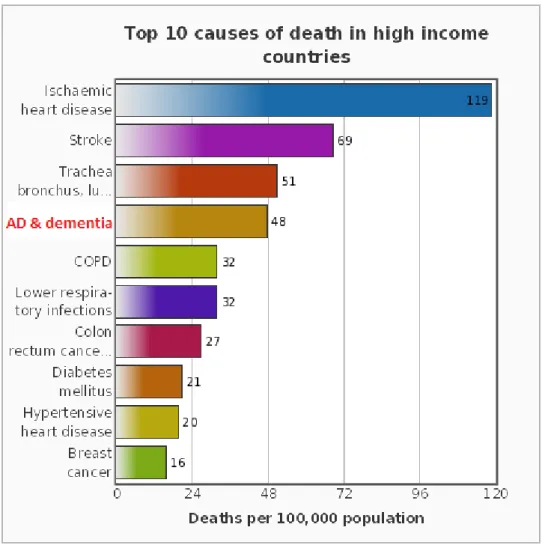
The Motivation
These individuals will be among the first generations to realize that longevity itself is a pyrrhic victory if those additional years gained are characterized by frailty, disability, and declining quality of life (Nicholas & Hall, 2011), and therefore , further emphasize the importance of preventive strategies. This has attracted attention as there is currently no reliable treatment to cure or even reverse the progressive course of dementia, while the prevalence of dementia increases with age. MCI was described as "a way station along the road to Alzheimer's" by Mayo Clinic researchers (Mayo Clinic, 2009), suggesting that MCI is an intermediate stage between the expected cognitive decline of normal aging and the more pronounced decline of dementia.
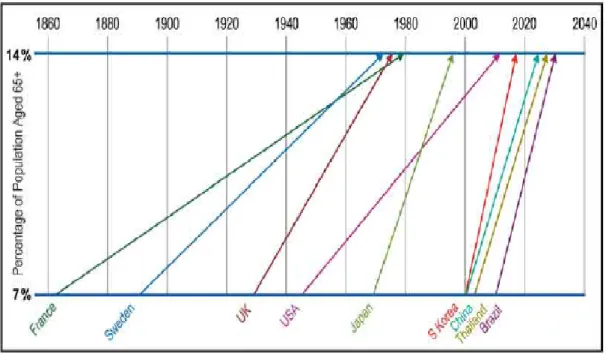
Study Purposes
Literatures Review
The Dementias
Although the exact cause of Alzheimer's disease is not known in most cases, plaques and tangles are often found in the brains of people with Alzheimer's. Lewy body dementia affects approximately 10 to 22 percent of people with dementia, making it one of the most common types of dementia. Lewy bodies are abnormal clumps of protein that have been found in the brains of people with Lewy body dementia, Alzheimer's disease, and Parkinson's disease.
The Impact of Dementia
Results of the study suggested that the primary distinction between cognitively normal population and mild cognitive impairment subjects was in the area of memory, while the other cognitive functions were indifferent. Score of 2 points or more in the test represents a probability of cognitive impairment and further assessment is needed (Galvin et al., 2005). A 25-item tool for potential long-term care needs screening in the domains of independent living and depression, with subscales on physical activities, anthropometry, oral health, social withdrawal, and cognition.
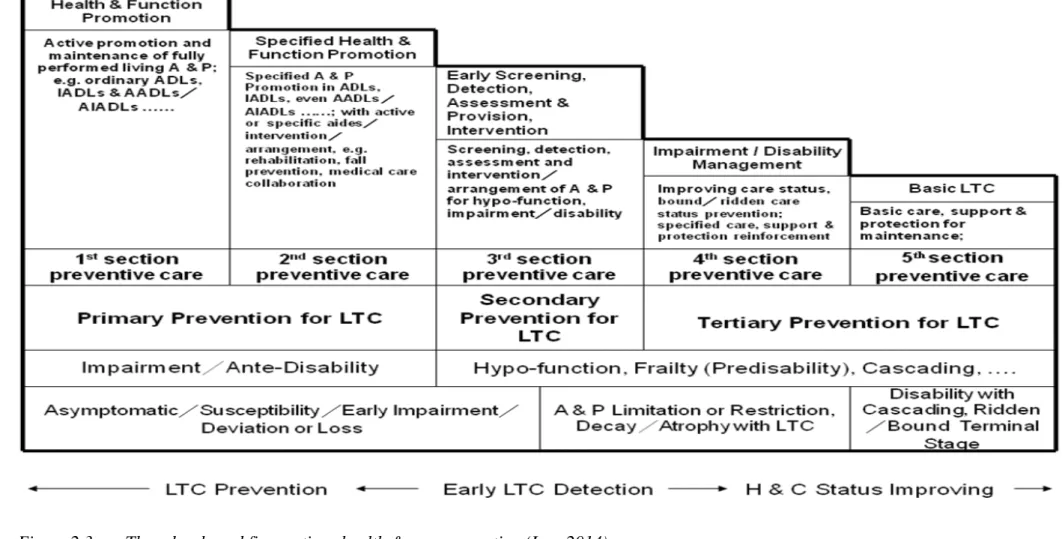
Statistical Analysis
Results
The AD-8 Screening
The local residents younger than 72 years had a relatively lower percentage of suspicions of mild cognitive impairment. From the cross-reference analysis of both AD-8 and Kaigo Yobo checklist screening (Table 4.7), the high likelihood of deficits in activities of daily functioning was noted in suspected MCI cases, with 30% of them at risk of needing care and another 50% of them were at risk with physical activity. Mild cognitive impairment (MCI) is an intermediate stage between cognitive decline due to normal aging and the morbid cognitive decline due to dementia.
Fact sheet on mild neurocognitive disorder. profiles for mild cognitive impairment and progression to dementia are gender specific. Busse A., Bischkopf J., Riedel-Heller S.G., Angermeyer M.C. Mild cognitive impairment: prevalence and predictive validity according to current approaches. Caracciolo B., Backman L., Monastero R., Winbald B., Fratiglioni L. Low mood symptomatology in the prodromal phase of mild cognitive impairment and dementia: a cohort study of an elderly community-dwelling population.
Atrial fibrillation and risk of dementia in non-demented older persons with and without mild cognitive impairment. Mild cognitive impairment, amnestic type. 2010) Plasma cystatin C and the risk of developing Alzheimer's disease in subjects with mild cognitive impairment. Prevalence of gender differences and predictors influencing the occurrence of mild cognitive impairment (MCI). 2003), Prevalence and classification of mild cognitive impairment in.
Impact of depressive symptoms on the rate of progression to dementia in patients affected by mild cognitive impairment. Mild cognitive impairment an overview. 2010) Prevalence of mild cognitive impairment is higher in men - The Mayo Clinic Study of Aging. Conversion from amnestic mild cognitive impairment to dementia of Alzheimer type is independent of memory deterioration.
Prevalence, distribution, and impact of mild cognitive impairment in Latin America, China, and India: A population-based study 10/66. Plasma fibrinogen is associated with cognitive decline and risk of dementia in patients with mild cognitive impairment.
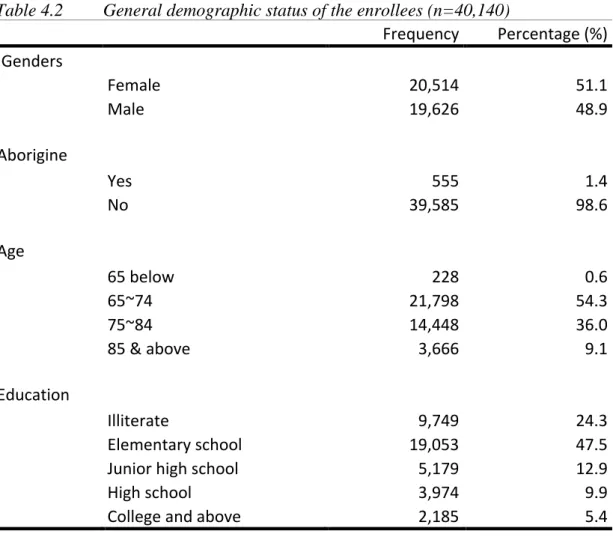
The Kaigo Yobo Checklist Screening
Discussion
In this study, 579 cases among 40,140 elderly community residents screened positive as suspected MCI and the prevalence was found to be 1.4%. Consistent with most of the studies mentioned above, this study found that older age was associated with a higher risk of MCI suspicion, but education level tended to be inversely associated. Indigenous people were also found to be more sensitive to MCI suspicion in this study compared to others.
The prevalence of general long-term care needs in potential was found to be 2.4% among older community residents. From the regression analysis, a trend was found that the needs for long-term care in the future increase with age, but education level appears to be a protective factor. This result may be somewhat consistent with the thesis of Nicholas and Hall (2011) that higher educated elderly tended to be better informed and more proactive about health, protecting themselves against rapid functional decline as they age in life.
Unaccompanied individuals tended to have a higher risk of potential long-term care needs, which was in agreement with another study (Petersen et al., 2010). Those underprivileged older unaccompanied women tend to be threatened by oral health. In the previous study, depressive symptoms were found to be a risk factor for MCI (Caracciolo, Backman, Monastero, Winbald, & Fratiglioni, 2011) while depression was also found to accelerate MCI conversion to dementia (Gabryelewicz, Styczynska, Luczywek, Varczak, Pfeffer and Androsiuk et al., 2007).
However, whether the MCI was accurately predicted remained uncertain as depression was reported to be the cause of false positive prediction in MCI screening (Petersen & Negash, 2008), while this study also screened for 33.9% of the suspected MCI cases were at risk for depression (Table 4.7).
Current Screening Manners
The AD-8 is a brief measure to distinguish between nondemented and demented individuals based on informant-reported cognitive change, as well as. In the current routine health check-up for the elderly, cognition is assessed using a preliminary cognitive performance assessment tool, such as the MMSE, SPMSQ or AD-8 in this case, which the cognitive change of the elderly can be precisely encountered. Patients with MCI or dementia, however, develop care needs early on and persist throughout the course of the disease (McLaughlin et al., 2010), whether needs are accurately reflected through the current screening method remains controversial although the activities of the Evaluation of skills of daily living (ADL) and instrumental activities of daily living (IADL) are covered in Routine Health.
In this study, by combining cognitive-focused and potential care-focused screening, not only the disorder of MCI or early dementia was encountered, but also the derived care needs along with the cognitive decline were also revealed. Furthermore, the care needs of those individuals who were cognitively unimpaired were also noted. The tremendous help that the patients need and the enormous commitment of the families and caregivers have made long-term dementia care unique.
In the experience of other countries with a well-developed long-term care scheme, such as Germany and Japan, to name but a few, in addition to a comprehensive assessment system to detect capacity and level of dependency, the level of patient needs, both subjective and objective, is also taken into account. Since the 1997 series of reinforcements, the development of Taiwan's long-term care system should be booming. However, the current long-term care system is more medically oriented, especially in dementia care.
However, in the current long-term care scheme, there is not only an underutilization of care needs, but also a lack of resources, as we will discuss below.
Resources on Dementia Care
Study Limitations
In addition, the information on past and current morbidity status and medications used was collected through open-ended questions completed by the public health nurses, which were non-standardized but not classified and coded according to CI, ICF and ATC classification for morbidity, functional ability , respectively used drugs. After processing, the data were still considered not applicable and were not used in this study. A possibility of overestimation of prevalence was noted in this study, as mentioned in the previous section; the AD-8 screening can have a high false positive prediction, as can the depression.
With the aim of investigating the prevalence of MCI and related potential long-term care needs among elderly community residents, the samples of this study were mainly recruited from community health promotion activities held by local primary health care centers. In addition, institutionalized elderly, who considered higher risk for MCI and greater care needs, were also excluded from the study.
Conclusion
The DASC system has been proven to be pragmatic in the Japanese community, which can provide useful experiences for. developing our own dementia prevention strategies and care plan in the near future. Cordell C., Borson S., Boustanid M., Chodoshg J., Reubenh D., Verghesei J. Alzheimer's Association recommendations for operationalizing the detection of cognitive impairment during the Medicare Annual Wellness Visit in a primary care setting. Cardiovascular Health Research Cognitive Research: Part 1. Matthews FE., Stephan BC., McKeith IG., Bond J., Brayne C. 2008) Two-year progression from mild cognitive impairment to dementia: how different definitions agree.
2008) Mild cognitive impairment: Epidemiology and dementia risk in an elderly Italian population. 2006) Conversion from mild cognitive impairment to dementia: predictive role of mild cognitive impairment subtypes and vascular risk factors. Promoting an early diagnosis system for dementia in the context of establishing a community-based integrated care system.
The DASC of Japan
The AD-8: The Washington University Dementia Screening Test
23 过去两周里,有没有什么事情你以前觉得很容易做,但现在却感到紧张或无聊? 1. 是 0. 否。
The AD-8 (Taiwan version)
The Kaigo Yobo Checklist (Japanese version)
The Kaigo Yobo Checklist (Taiwan version)
Excerption of ICD-10 Chapter V (F00-F09)
Excerption of ICD-10 Chapter VI (G30-G32)
Excerption of DSM-5 (Section II – Neurocognitive Disorders)
Official Document of Authorization From Particular Local Government
Official Document of IRB Approval
